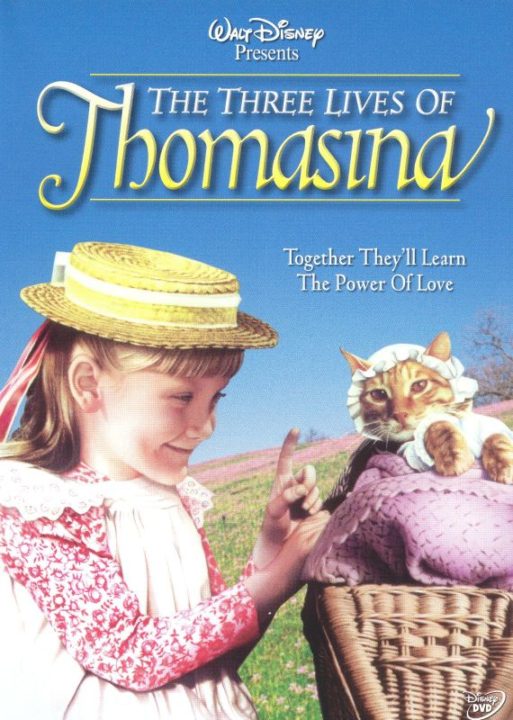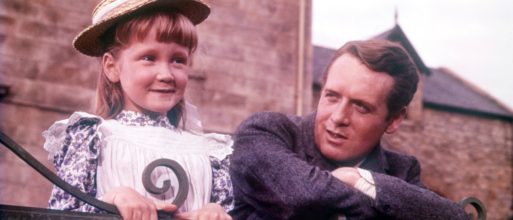
“The Three Lives of Thomasina” is based on the 1957 novel “Thomasina, the Cat Who Thought She Was God” by Paul Gallico, who also wrote “The Poseidon Adventure,” “Pride of the Yankees” and “The Snow Goose,” among other works. “Thomasina” is a splendid yet little-known fantasy film starring screen veteran Patrick McGoohan as stern veterinarian Andrew MacDhui. According to his profile on a well-known film database, McGoohan considered it a favorite among the dozens of films he made over some five decades.
Karen Dotrice, who plays Andrew’s daughter, Mary, and Matthew Garber, seen as Mary’s playmate Geordie McNab, became stars themselves the next year portraying siblings Jane and Michael Banks in a much more famous kids’ fantasy film – “Mary Poppins. “
“The Three Lives of Thomasina,” about a cat who, just by being herself, brings lonely people together, is charming, enlightening, entertaining and suitable for the youngsters who are its intended audience, even though death is a primary theme, as one insightful theatergoer noted.
The film honestly shows vastly different responses to catastrophic loss – denial and distraction in a middle-aged man, near-complete breakdown in a 7-year-old girl. It also demonstrates how, through strengthening existing relationships and forming new ones, grief may be transcended and healed.
Its bold portrayal of trauma in a young child would likely be considered a remarkable achievement even today. And the movie includes an astonishing-for-its-time animation sequence showing how cats were revered as deities in ancient Egypt.
The tale is told by Thomasina herself to explain the three phases of her life. The first is with the MacDhuis, the second with a nature-loving recluse (television stalwart Susan Hampshire) derided by neighbors as “Mad Lori” MacGregor, and the third, well, let’s just say that everything eventually comes together for good.
A bereaved father, a confused child, a spunky cat
In a Scottish village in the year 1912, veterinarian Andrew MacDhui lets science and skill, not friendship and a good bedside manner, rule his work; the workaholic widower hides his emotions even from himself. To a select few, he confides that he lost his faith when he lost his wife, a nurse who became mortally ill following her rounds. His dispassionate ways drive off customers and finally lead him to order euthanasia for his own daughter’s beloved pet,who is suffering from tetanus.

A scene with Mary and her veterinarian father from “Three Lives of Thomasina”
Credit: Disney Movies
Believing that Thomasina has died, Mary and her friends cope with their feelings by acting out an elaborate funeral for Thomasina. But the cat is rescued just in time by Lori, a beautiful woman living alone in the woods who, in contrast to Mary’s father, operates according to instinct and spirituality. Her ability to treat sick and injured animals works well enough that she begins to attract those pet owners who can’t stomach the veterinarian’s overly intellectual attitude. Andrew eventually decides to check out the competition, leading to a classic meet-cute.
Eventually, Thomasina, physically healthy but mentally hazy, tries to go home, but, when confronted by Mary in a rainstorm, doesn’t recognize her and flees instead. It is too much for the child. Having lost her mother completely and her father emotionally, feeling abandoned by her cherished pet, and now with severe pneumonia following the storm, she continues to reject her father, telling him repeatedly that he is dead.
As the adult characters fret by her bedside, Mary’s very survival seems in doubt. What will happen? Well, given that this is a Disney film for children, it has a positive ending that some viewers probably can see coming a long way off. But that doesn’t spoil the delight of this film. Suffice it to say that Thomasina’s third life is the key to happiness for all the main characters
Many viewers, especially those living through troubled times, may find “The Three Lives of Thomasina” to be just what the doctor ordered — full of catharsis, creativity, compassion and comfort. Children, who are the original target audience, probably will simply enjoy the beautiful scenery, feline antics and imaginative plot. It is to be hoped that adult viewers will identify with Andrew, who realizes just in time that he needs to learn to value the family pet as much his daughter does if he is to have a meaningful place in her life.

 “The Three Lives of Thomasina” by Ron Miller/Walt Disney
“The Three Lives of Thomasina” by Ron Miller/Walt Disney


 “Songbird” by Fleetwood Mac
“Songbird” by Fleetwood Mac
 First the Wealth Gap, Now the U.S. Has a Growing Health Gap
First the Wealth Gap, Now the U.S. Has a Growing Health Gap
 How to Comfort A Dying Loved One
How to Comfort A Dying Loved One














